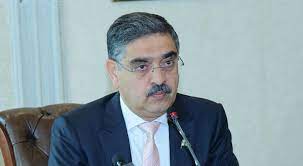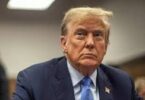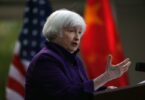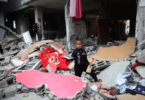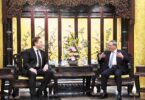Prime Minister Anwaar-ul-Haq Kakar, accompanied by a high-level delegation, has reached Beijing to participate in the 3rd Belt and Road Forum (BRF), the magnificent Chinese Initiative for global connectivity and International Cooperation. During the visit, the Prime Minister will attend the Opening Ceremony of the BRF and will hold bilateral meetings with the Chinese leadership including President Xi Jinping, Premier Li Qiang and Mr. Li Xi, a member of the Standing Committee of the Politburo of the Communist Party of China (CPC). The leaders will discuss all facets of bilateral relations, with particular focus on strengthening trade and economic cooperation between the two countries.
The Belt and Road Forum (BRF) refers to the Belt and Road Initiative (BRI), which is an international Consortium organized by the People’s Republic of China (PRC) to promote its ambitious project to compete with its Western contenders including the United States, the EU and their partners in Asia and Oceania. The BRI, also known as the One Belt, One Road (OBOR) initiative, is a large-scale infrastructure and economic development project aimed at enhancing connectivity and cooperation between China and countries in Asia, Europe, Africa, and beyond. The forum serves as a platform for participating countries to discuss and collaborate on various aspects of the BRI, including infrastructure development, trade, investment, and people-to-people exchanges. It provides an opportunity for China to showcase its vision for economic and trade integration, while also addressing concerns and criticisms that have been raised by its adversaries regarding the initiative’s environmental, economic, and geopolitical implications.
China’s Belt and Road Forum typically features high-level government officials, business leaders, and representatives from participating countries, and plays a significant role in shaping the development and direction of the Belt and Road Initiative. Currently, a large number of global leaders from non-aligned nations including Pakistan, Chile, Sri Lanka, Congo, Papua New Guinea, Malaysia, Indonesia and others along with anti-western club together with Iran, Brazil, Russia, Belarus and several others have joined BRI club to benefit from unprecedented economic and monetary dividends of this modern age silk road and intercontinental economic integration. Although, there is massive propaganda and stigmatization from Western politicians, think tanks and media against Beijing’s Belt and Road Initiative and its widely publicized China-Pakistan Economic Corridor (CPEC) yet scores of nations from all continents have joined this club because it brings benefits to everyone.
Historically, Pakistan occupies a significant place in Beijing’s Belt and Road Initiative (BRI), as the China-Pakistan Economic Corridor (CPEC) a flagship project within the BRI that aims to connect Gwadar Port in southwestern Pakistan to China’s northwestern region, Xinjiang. The CEPC is a massive infrastructure and economic development project led by China that links both neighbours and long-held friends through a network of highways, railways, and pipelines. This corridor is considered a vital component of the BRI and is expected to enhance connectivity, trade, and economic development in Pakistan and the broader South Asia region through various infrastructure, energy and development projects. The CEPC has emboldened Pakistan’s geostrategic importance by transforming the South Asian nation into a regional trade hub, connectivity provider and gains multiplier in the region and beyond.
The government and people of Pakistan perceive the CEPC and the wider Belt and Road Initiative (BRI) as guarantors of regional and global connectivity, economic integration and multilateral cooperation among the member states. Pakistani leadership aims to explore new avenues under the CPEC to enhance trade and investment, bilateral connectivity and people-to-people contacts between Pakistan and China in a bid to transform this bilateral cooperation into multilateral engagement in South and Central Asia that leads to the Middle East through Iran. Currently, Pakistan, China and several other nations are endeavouring hard to manifest this dream into a shared and prosperous destiny in the days to come.

